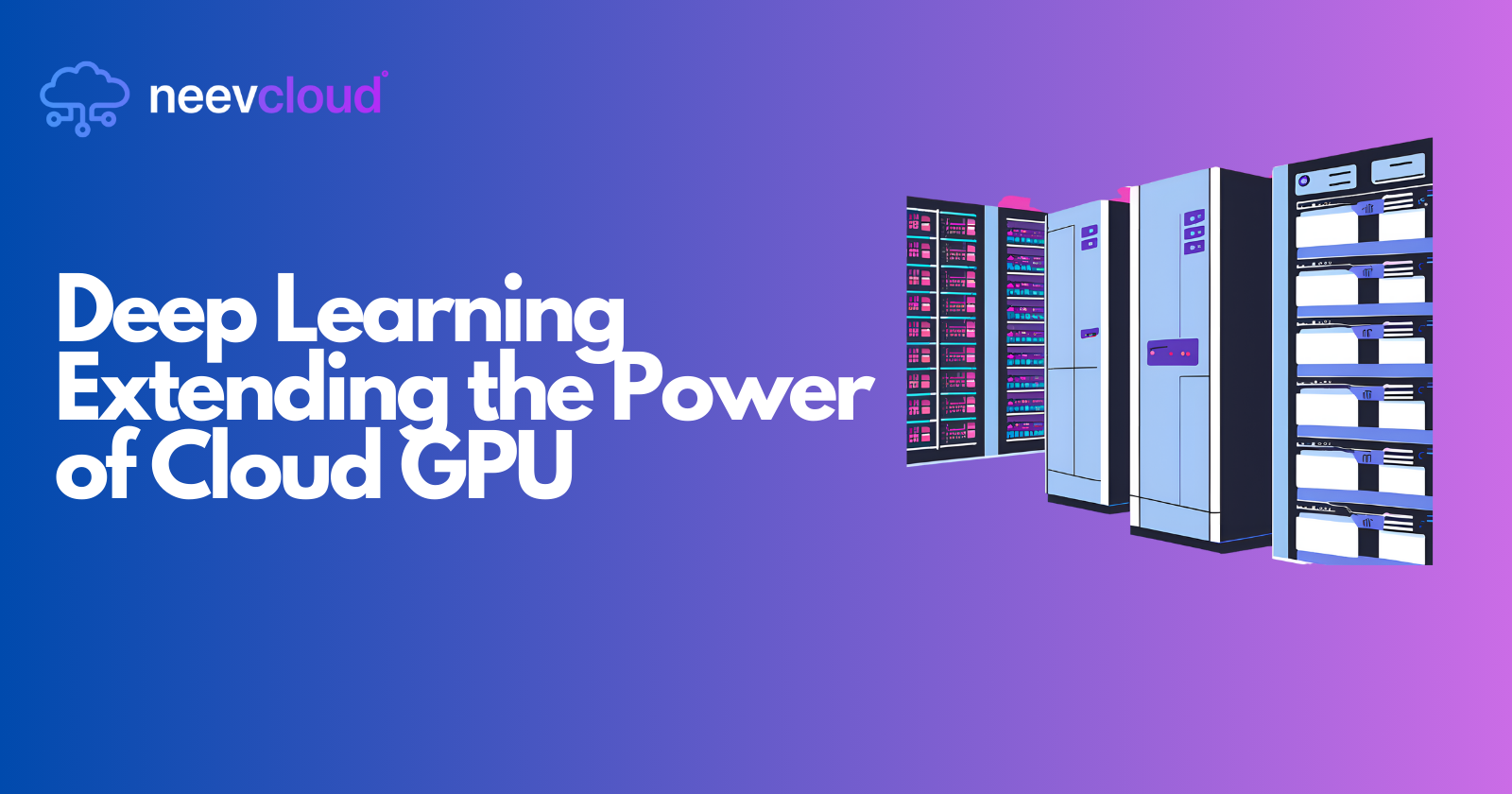Deep Learning Extending the Power of Cloud GPU
 Tanvi Ausare
Tanvi Ausare
As the capabilities of deep learning grow, so do the demands for high-performance, scalable computing power. Cloud GPUs, like the NVIDIA H100 and H200, have brought new levels of efficiency, speed, and flexibility to complex deep learning tasks. By tapping into the latest advancements in GPU technology, deep learning models can process more data, make predictions faster, and solve problems at a scale previously thought impossible.
1. Introduction: The Evolution of Deep Learning and Cloud Computing
Growth in Deep Learning: Cover the increase in deep learning applications across sectors (healthcare, finance, e-commerce, etc.) and the need for powerful infrastructure.
Role of Cloud Computing: How cloud infrastructure, paired with advanced GPU technology, has become a cornerstone for processing vast datasets.
Importance of Cloud GPUs: Outline why traditional CPUs fall short in deep learning tasks, making specialized GPUs essential.
2. Key Benefits of Cloud GPUs for Deep Learning
High Scalability: Cloud GPU services offer scalability, allowing users to scale up GPU power as needed without investing in physical infrastructure.
Cost Efficiency: Compared to on-premises GPU clusters, cloud-based GPUs reduce costs and maintenance requirements.
Flexibility and Accessibility: Explain how Cloud GPUs give companies access to cutting-edge GPU technology without significant upfront costs.
3. GPU Cloud Computing Solutions from NVIDIA
NVIDIA GPU Cloud (NGC): A comprehensive hub for GPU-optimized software, NGC offers a variety of pre-trained models, model training scripts, and containers to simplify and accelerate AI and deep learning workflows.
DGX Cloud: A fully managed AI supercomputing platform hosted on the cloud, DGX Cloud offers instant access to NVIDIA's DGX hardware, allowing enterprises to train and deploy large AI models efficiently.
NVIDIA AI Enterprise: A complete suite of AI and data analytics tools, NVIDIA AI Enterprise provides optimized software to support end-to-end workflows for AI development on any data center, edge, or cloud infrastructure.
NVIDIA Base Command Platform: This platform enables AI teams to manage AI workloads on cloud or on-premises DGX systems with tools for orchestration, resource scheduling, and real-time monitoring.
DCGM Exporter: The NVIDIA Data Center GPU Manager (DCGM) Exporter helps monitor the health and performance of GPU resources in cloud environments, providing valuable metrics for managing workloads and optimizing resource allocation.
NVIDIA Clara on the Cloud: Designed for healthcare and life sciences, Clara offers tools and resources for imaging, genomics, and smart hospital solutions, enabling scalable AI-powered healthcare applications in the cloud.
NVIDIA Omniverse Cloud: A cloud-based collaboration and simulation platform, Omniverse allows developers and designers to create, test, and deploy digital twins and 3D applications at scale, leveraging NVIDIA GPUs for high-fidelity simulations.
Further more you can find at: https://www.nvidia.com/en-in/data-center/gpu-cloud-computing/
4. Cloud GPU and Deep Learning: Key Use Cases
Image and Video Recognition in the Cloud
Cloud-based Training: Real-time, large-scale training on massive image datasets is achievable with Cloud GPUs.
Medical Imaging: Cloud GPUs power complex deep learning models for detecting anomalies in medical images, supporting faster diagnostics.
Natural Language Processing (NLP) on Cloud GPUs
Scalable NLP Models: Explain how Cloud GPUs are essential in training and deploying NLP models, especially for translation, sentiment analysis, and chatbots.
Support for LLMs: Cloud-based H100 and H200 GPUs make it feasible to develop and fine-tune LLMs, enabling dynamic conversation models.
Predictive Analytics and Real-time Data Processing
Financial and Retail Predictions: Show how deep learning models trained on Cloud GPUs can make accurate, high-frequency predictions.
Real-time Insights: Faster processing speeds of Cloud GPUs enable immediate data analysis, essential for dynamic environments like stock markets.
5. Advantages of Cloud GPUs in AI Model Development
Flexibility for Experimentation and Scaling
Modular Experimentation: Cloud GPUs offer the flexibility to scale up or down based on the model's demands without being bound to physical limitations.
Cost-Effective Scaling: Companies can scale Cloud GPU usage dynamically to match budget and project needs, reducing unnecessary expenses.
Accelerated Model Training and Inference
Reduced Time-to-Market: Speed up the entire training process, getting models into production faster than traditional setups.
Inference Speed Improvements: Cloud GPUs are optimized for inference workloads, providing better response times for real-time applications.
6. Challenges and Considerations in Adopting Cloud GPUs for Deep Learning
Cost Management: Addressing how to manage operational expenses with dynamic scaling and optimization techniques.
Data Privacy and Security: Cloud-based operations must prioritize data encryption and secure data transfer, especially in regulated industries.
7. Future of Cloud GPUs in Deep Learning
Next-Gen GPUs on the Horizon: Look ahead to potential advancements in GPUs that will make cloud deep learning even more efficient.
Growth of Edge AI and Cloud Synergy: As edge AI grows, Cloud GPUs will likely play a complementary role in processing at the edge and cloud.
Sustainable Computing: Focus on the role of cloud providers and GPU companies in reducing power consumption and increasing sustainable practices.
Conclusion
Cloud GPUs are reshaping the future of deep learning, making it accessible, scalable, and powerful. As the H100 and H200 GPUs continue to push the limits of deep learning in the cloud, enterprises and researchers alike stand to benefit from enhanced speed, performance, and flexibility. The continued evolution of Cloud GPUs will unlock new possibilities in AI, enabling applications that reach beyond current limitations and pushing innovation to new heights.
Subscribe to my newsletter
Read articles from Tanvi Ausare directly inside your inbox. Subscribe to the newsletter, and don't miss out.
Written by
